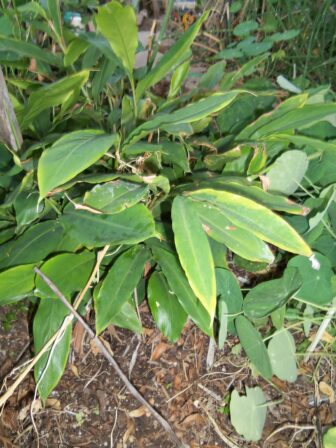Yellow is for Depression
The news on health benefits of ingesting turmeric (Curcuma longa) just keeps accumulating. Using the original research that validated this root crop as an effective anti-inflammatory, many researches are building from there to test whether the anti-inflammatory properties will affect a wide range of conditions from heart disease to diabetes, from cancer to skin break-outs, and from asthma to pre-menstrual symptoms.
The most recent research findings reported by Phytotherapy Research (see www.GreenMD.com for the link to the original source) pitted the use of turmeric against the well-known anti-depression drug, Prozac (fluoxetine). It was done with sixty patients diagnosed with major depressive disorder (MDD). Turmeric used alone was shown to be equally effective to Prozac and also to the combination of Prozac and turmeric.
So, while the herb was not shown to get better results, it is safer to use, since it does not present the psychotic and suicidal ideation side-effects so common with using Prozac. And, there is no withdrawal problem if a person decides to cease taking it.
While turmeric is easy to consume in the form of curry sauce, it may not be possible to eat enough of it in our diet to get a therapeutic dose for depression, cancer, diabetes or arthritis. About three percent of the raw plant matter is curcumin, the constituent generally thought of as the “active” ingredient. So, one way to get a complete dose is to take the concentrated extract that is higher in curcumin.
There is now an evidence-based concentrate that is being used by supplement companies as the base of their products that contain curcumin. When you read the ingredients, these will prominently list either “Meriva” or have the number “95” to indicate that the turmeric used is the high potency variety. Even in the concentrated form, the dose needed is about a heaping tablespoon of the powder once or twice a day. If you get the 500 mg capsules of a product such as Jarrow brand Curcumin-95, you will need to take six capsules daily. The curcumin is best absorbed by the body when mixed with some kind of oil, so it is most reasonable to take the dose along with a meal that includes some form of fat.
Turmeric is one of the ubiquitous spices in food from India. It is a tuber root related to ginger and grown in a similar fashion. It is not just for curry, but also “golden milk” beverages that are whole milk simmered with turmeric and drunk sweetened like hot cocoa. For over five thousand years this root has been harvested and used in ayurvedic medicine. It is not uncommon in India to see people whose skin is stained yellow from the practice of using turmeric paste applications to skin problems. It is highly effective for rashes and skin cancer.
This summer I have been teaching botanical medicine to medical students from Bastyr University. Each week, students choose to experience the effects of some herb that they have learned about in class. Last week three students all reported back on their results with turmeric and all noticed pronounced improvement after taking a therapeutic dose for only three days. One had an injured knee and a strained back that he smeared with turmeric paste. Another had IBS symptoms that abated significantly. The third student opted to treat asthma attacks with preventative doses and documented a reduction in episodes.
All have decided to continue taking the herb. Next week I will ask them if they have noticed any shift is their mood – a sense of well-being to go with their wellness. If you want your outlook to be sunny, you might consider getting some bright yellow into your routine.
Category: Health & Fitness, Life Style








